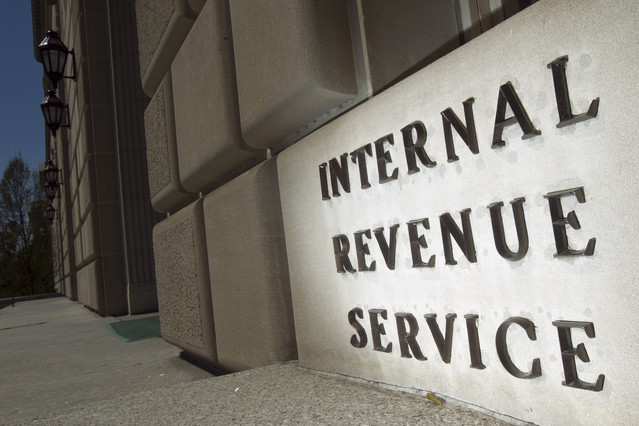
The IRS reduced its backlog of unprocessed original tax returns by 80% from the 2022 to the 2023 tax filing season and improved its phone service, but real and permanent change requires significant IT upgrades, the national taxpayer advocate said Wednesday in her midyear report to Congress.
“In submitting this report, I’m finally able to deliver some good news: The taxpayer experience vastly improved during the 2023 filing season,” Erin Collins wrote in her introduction to the report.
The difference between the 2022 and 2023 filing seasons was “like night and day,” she wrote.
Collins’ annual midyear report, Objectives Report to Congress, for fiscal 2024 reviewed the IRS’s performance in the 2022 tax filing season and outlined 17 “systemic advocacy objectives” going forward. The report also lists internal goals and objectives for the Taxpayer Advocacy Service (TAS) that Collins heads.
For the week ending April 22, 2023, the IRS had 2.6 million unprocessed individual and business tax returns, compared to 13.3 million as of the same date in 2022, a reduction of 80%. In 2022, the IRS answered 10% of the 7.5 million calls it received, keeping each caller on hold for an average of 29 minutes. In 2023, the IRS answered 35% of the 32 million calls it received, keeping each caller on hold for an average of eight minutes.
But the IRS’s outdated IT systems are an obstacle to even simple tasks. For example, customer service representatives (CSRs) in the accounts management (AM) function answer calls and process taxpayer correspondence and cases, including amended returns.
CSRs assigned to answer calls cannot perform other tasks while waiting for calls, partially because of the antiquated IT, Collins wrote. “As a result, they were idle 34% of the time they were assigned to answer the phones, meaning they were neither assisting taxpayers on the phone nor processing amended tax returns and taxpayer correspondence,” she wrote.
The number of unprocessed amended individual and business paper tax returns dropped to 3.4 million in 2023 from 3.6 million in 2022, a 6% reduction. The number of unprocessed taxpayer correspondence and AM cases, excluding the amended returns, fell just to 5 million in the 2023 tax season from 5.3 million in 2022. AM cases include identity theft and employer identification numbers.
While the IRS accepts Forms 1040-X, Amended U.S. Individual Income Tax Return, electronically, it must process them manually, Collins wrote. As of the end of the filing season, the IRS needed seven months to process these returns.
On the business side, the fraud in the pandemic-era employee retention credit is responsible for much of the delay, she wrote. At the end of May, the backlog of employee retention credit claims was estimated at 800,000 with more forms arriving, putting the IRS “between a rock and a hard place,” she wrote.
“If the IRS pays out claims quickly without taking the time to review them individually, it will be making some payments to individuals potentially engaged in fraud,” the report said. “If it takes the time to review claims individually, legitimate businesses who need the funds Congress authorized to help them stay afloat may not receive them in time.”
The delay in the IRS handling of identity theft cases has been “particularly long and frustrating,” Collins wrote. The average cycle time for those cases to close in April 2023 was nearly 15 months, or about three months longer than in April 2022.
The reassignment of employees to answer the phones is responsible for the delay, “causing harm to taxpayers who were victims of identity theft,” Collins wrote in her Review of the 2023 Tax Season. “The IRS needs to devote more resources, increase education and awareness, and prioritize assistance to this vulnerable taxpayer population.”
Using some of that money for increased staffing is mostly why taxpayer services improved in the 2023 tax season, Collins wrote.
“But to achieve and sustain transformational improvement over the longer term, the IRS must focus like a laser beam on IT,” she wrote.
That is possible because of additional funding that the IRS is budgeted to receive. In April, IRS Commissioner Danny Werfel released a Strategic Operating Plan based on the $80 billion that the agency originally was to receive over 10 years from the Inflation Reduction Act, P.L. 117-169. The debt ceiling deal reduced that figure by about $20 billion.
Collins’ IT to-do list includes:
- Robust online accounts for taxpayers that are comparable to accounts provided by banks and other financial institutions;
- Allowing all taxpayers to e-file tax returns;
- Allowing taxpayers to receive and submit responses to information requests electronically in all interactions with the IRS; and
- Replacing its 60 discrete case management systems that have limited ability to communicate with each other with an integrated, Service-wide system.
“But with adequate funding, leadership prioritization, and appropriate oversight from Congress, I believe the IRS will make considerable progress in the next three to five years in helping taxpayers comply with their tax obligations as painlessly as possible,” Collins wrote.


